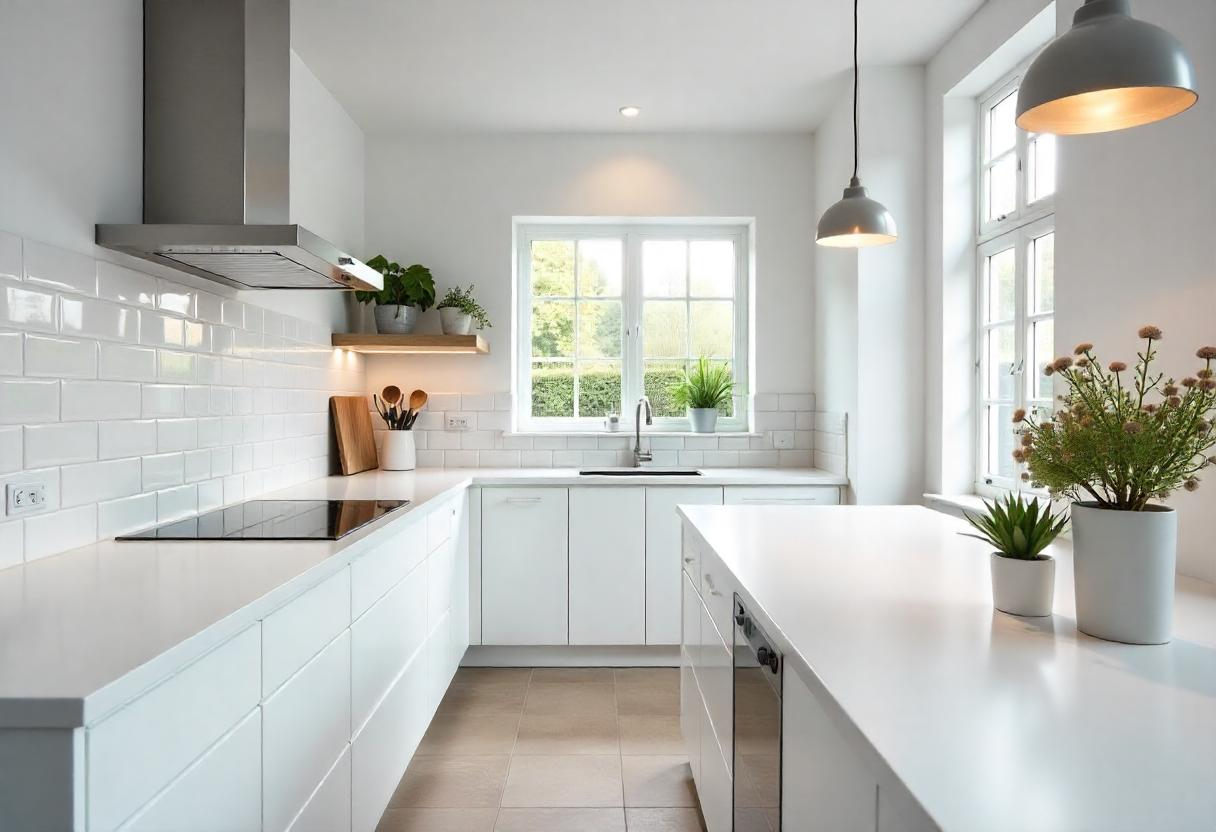Undertaking a kitchen renovation can feel overwhelming, yet focusing on the three core surfaces, benchtop, splashback and cabinetry, provides a clear roadmap to success. Each component is vital:
- You need a benchtop for daily chores like meal preparation, cooking, etc.,
- Splashbacks shields walls from splashes and creates a visual interest,
- Cabinetry provides storage solutions and creates your kitchen’s design tone.
Benchtop, splashback and cabinetry combine to create a seamless appearance and reliable functionality that enhances your culinary experience. Whether you’re drawn to the rugged beauty of granite kitchen benchtops or prefer a sleek composite finish, aligning colour, texture, and layout from the outset minimises guesswork later on. Explore seven essential steps for blending benchtop, splashback, and cabinetry into one unified design statement.
1. Setting Your Renovation Focus
A seamless kitchen makeover begins by deciding which surface takes centre stage. Many homeowners choose their kitchen benchtops first, especially if they’re keen on granite kitchen benchtops for their durability and timeless appeal. Once that decision is made, you can select cabinetry and splashback options to complement the stone’s veining and colour palette. If, instead, you’ve fallen for a particular splashback pattern or hue, select the benchtop and cabinets around it. Either way, establishing a clear starting point ensures each layer of your design supports the next.
2. Blending Texture and Surface Finishes
Surface feel matters just as much as colour. Polished granite benchtops stand in bold contrast to matt-finished cabinetry. At the same time, a textured or patterned glass splashback provides eye-catching interest; opting for the same material for benchtop and splashback, such as continuous granite, results in a smooth, uninterrupted stretch that looks highly refined. If you choose custom cabinetry, matching the finish on doors and drawers to the benchtop material texture keeps the design coherent from one end of the kitchen to the other.
3. Harmonising Your Colour Scheme
Colour choices transform busy cooking zones into inviting hubs. You can achieve a dramatic look by pairing deep-coloured cabinets with a pale benchtop and matching splashback. Conversely, choosing subtle tones within one family, such as soft greys across cabinets, benchtops, and splashbacks, creates a soothing backdrop—the idea is to select a maximum of two or three shades and then repeat them in different intensities. It gives a unified finish that blends your personality without straining the eye.
4. Balancing Practical Needs with Style
A pleasing kitchen renovation is only as good as its functionality. Splashbacks near the stove or sink face the most wear, so they must resist stains and heat. Granite kitchen benchtops are known for their heat and scratch resistance, so they are a highly sought-after choice among homeowners. Look for cabinets offering clever storage solutions—deep drawers for pots, pull-out trays for spices, and plan splashback materials that are easy to wipe clean. Placing a bolder splashback behind the hob creates a focal zone that serves both form and function.
5. Infusing Personal Flair
Each kitchen should reflect the lives lived there. If you adore bright, bold accents, inject colour with cabinetry handles, decorative tiles within the splashback or coloured grout lines. Fans of minimalist spaces might choose a single-tone scheme and then layer texture through natural stone or wood accessories. The best outcome arises when your selections feel like an extension of your personality—a sleek monochrome layout, a rustic charm with timber open shelving, or a mid-century modern vibe featuring geometric splashback tiles.
6. Lighting Strategies to Showcase Finishes
Surfaces change with the available light. Daylight reveals every nuance of your chosen finishes, while artificial sources can warm or cool their appearance. A light-reflective splashback will help bounce natural light around a darker space, making it feel larger. Under-cabinet LED strips highlight transitions between benchtop and cabinetry and add drama to the area around the cooktop or sink. Position accent lights to draw attention to the grain of a stone benchtop or the subtle swirl of a composite surface.
7. Planning for Maintenance and Longevity
Selecting premium materials is only half the battle; maintaining them ensures your kitchen stays fresh for years. Granite kitchen benchtops require periodic sealing to guard against stains and spills—critical in a high-traffic kitchen benchtop that sees daily use.
Wipe splashbacks with a mild detergent after cooking, and avoid abrasive cleaners on matt cabinet surfaces. Regularly check sealant lines around sinks and behind the cooktop to prevent water ingress. A simple care routine preserves the lustre of your surfaces and keeps the entire kitchen looking immaculate.
Wrapping Up
A kitchen that flows effortlessly from benchtop to cabinetry to splashback blends practicality with aesthetic appeal. Select your primary surface first, then work with a concise colour palette, mixing textures and position lights to emphasise each finish. It will give you a kitchen that’s practical and visually engaging.
Whether you opt for striking granite kitchen benchtops or sleek composite surfaces, thoughtful coordination turns a renovation into a standout kitchen that will serve you well for years.
